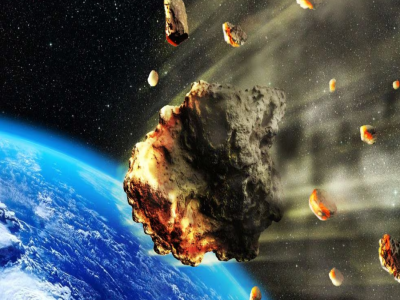
How Big Is the Asteroid Thats Coming in 2024
As remnants of the early Solar System and sources of information on the origin of planets and other celestial bodies, asteroids have long captivated both scientists and the general public. Occasionally, Earth comes into contact with asteroids that are unusually near, which causes a mixture of interest and worry. One such asteroid is receiving a lot of interest in 2024. What does this asteroid's approaching signify for us, and how large is it?
1. The Questionable Asteroid
2024 GD1 is the asteroid that will be in the news in 2024. It is a near-Earth object (NEO) that has been monitored globally by satellite organizations and astronomers. Although it's not the biggest asteroid ever discovered, given its closeness to Earth, its size and course need careful investigation.
2. Dimensions and Features
The diameter of asteroid 2024 GD1 is believed to be between 150 and 300 meters, or 490 and 980 ft. About other asteroids in our Solar System, this puts it in the "small" to "medium" group. To put things in perspective, the well-known asteroid Chicxulub, which wiped out the dinosaurs, had a width of around 10 kilometers (6 miles).
The near proximity of 2024 GD1 to Earth makes it notable even if it is smaller in size. Even though there is very little chance of an asteroid hitting our planet, an object this massive may still have a significant impact.
3. On September 8, 2024, the
Approach 2024 GD1 is predicted to make its closest approach to Earth. It will pass close to our planet at that point, around 7 million kilometers, or 4.3 million miles. There is no risk of a collision even if it sounds closeâ€â€Âroughly eighteen times the distance between Earth and the Moon.
4. Monitoring and Observations
For several years, astronomers have been utilizing a range of telescopes and tracking technologies to observe 2024 GD1. These measurements are essential for making accurate predictions about the asteroid's course and making sure that there are no unanticipated deviations from it.
Sophisticated models are used by space agencies like as NASA and the European Space Agency (ESA) to mimic the orbit of the asteroid and evaluate any possible risk. Although 2024 GD1 does not now represent a threat to Earth, continuous observations are improving our knowledge of its trajectory and any future encounters.
5. Significance of Science
Even though 2024 GD1 is not predicted to impact Earth, its near approach presents important study possibilities. By studying it, scientists can better understand the composition, structure, and behavior of such asteroids. This knowledge is required to develop mitigation methods for future, bigger asteroids that may approach Earth more closely requires the use of this knowledge.
Furthermore, asteroidal exploration and landing missions shed light on the composition of our solar system and the Earth's past. By watching 2024 GD1, we can collect data that will improve our methods for detecting asteroids and preventing impacts.
6. The More Comprehensive Framework
The approaching GD1 in 2024 emphasizes the significance of ongoing study and awareness of planetary security. Even if there isn't a direct threat from the asteroid, learning about near-Earth objects is essential to being ready for any future encounters.
Technology developments and international collaboration will be essential to ensuring that Earth is ready for any asteroids that may threaten the planet. The information and expertise gathered by tracking objects such as 2024 GD1 enhance our total capacity to safeguard our planet.
Conclusion
The tiny yet fascinating asteroid 2024 GD1 is scheduled to come near Earth in 2024. It poses little threat to Earth, with a diameter of 150 to 300 meters and a close approach distance of around 7 million kilometers. But its presence serves as a reminder of how crucial planetary defense and asteroid tracking are.
By keeping an eye on and researching 2024 GD1, scientists advance our knowledge of the dynamics of near-Earth objects and improve our readiness for more celestial encounters. Therefore, even if there's no cause to panic, there are many reasons to continue being interested in and intrigued about the rocky neighbors of our Solar System.